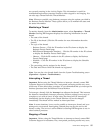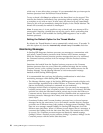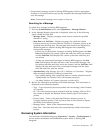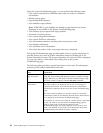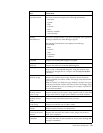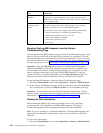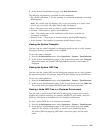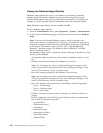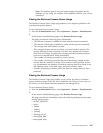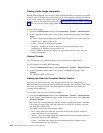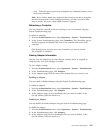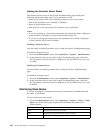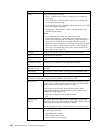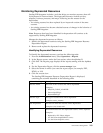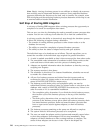Note: The database part of the pool names changes depending on the
database you are using, for example, if the database is Oracle, you will see
oraclePool.
Viewing the Business Process Queue Usage
The Business Process Queue Usage page enables you to diagnose problems with
your business process queues.
To view Business Process Queue Usage:
1. From the Administration menu, select Operations > System > Troubleshooter.
2.
In the System Troubleshooting page, click Business Process Usage.
The page provides the following queue information:
v The amount of memory available for cache and the amount consumed.
v The amount of disk space available for cache and the amount consumed.
v The average wait time based on priority.
v The average business process execution cycle time based on priority. The
average business process execution cycle time may include the execution
times of several steps. It captures the average time that business processes
are active on threads before being rescheduled.
v The number of business processes in priority queues.
v The number of business processes that ran without being cached and the
number that are currently in cache. Cache location is also specified so that
you can determine the number of business processes that were found in the
soft reference cache, in the disk cache, and in the memory cache.
v Number of business processes within the data size ranges that have been
processed.
Viewing the Business Process Usage
The Business Process Usage page enables you to review the state of a business
process and the process count. If a link is enabled in the Process Count area, you
can select it to view affected business processes and manage them.
To view Business Process Usage:
1. From the Administration menu, select Operations > System > Troubleshooter.
2.
In the System Troubleshooting page, click Business Process Usage.
The page provides the information about the following business process states
and the process count:
v ASYNC_QUEUED
v Active
v Halted
v Halting
v Waiting
v Waiting_On_IO
v Interrupted_Man
v Interrupted_Auto
Performance Management 103



